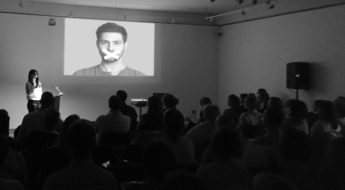
With the frenetic pace of modern working life, you may be use to living with a super revved-up mind, one that runs on overdrive from the moment you wake to the moment you rest. That fast-paced constant whirring of your mental gears may have become your norm, who you are and how you roll.
Yet, there are two thinking gears to the mind that we’re all capable of using.
Psychologist Dr George Pransky calls these two different states Active thinking and Passive thinking.
In other words, you’re either pumping the pedals or you’re freewheeling.
Active thinking is where most people spend their conscious life, after all, a super busy active mind has been endorsed throughout life as the way to be successful and get things done.
Yet, constantly pumping the pedals of your mind is not only detrimental to your overall physical and mental well-being, it actually starts to hinder your performance. Busy thinking is not the asset it sells itself to be.
When your mind is over active, it creates tension in your body.
Your nervous system becomes revved-up as your body responds to the constant thinking that’s going on in your head.
You can easily become mentally overloaded and your capacity for new ideas and insights quickly dwindles as you spend the majority of your energy reacting to your own thinking.
Passive thinking is when you’re disengaged from your active thinking. You’ve let go of your focus being on the thoughts inside your head about your job, the tasks you need to do, other people and yourself.
When you take your focus out of your head, you’re more responsive to what’s in front of you right now. You can see things from a different perspective and have the chance to reflect.
When your mind is passive, it allows relaxation in your body.
Your mind can let go, your shoulders can drop and you can breathe out.
When I began to understand these two different thinking states and dropped into passive thinking, I would start sighing like crazy.
My body was able to relax and release the tension I’d built up over years of living in a constantly overactive state of mind. My body and my mind were finally able to let go.
What people often misunderstand about passive thinking is that it’s not your mind at rest, it’s your mind geared-up for peak performance.
Dr George Pransky talks about pacing your mind to create a sane pace to function at for mental health, physical well-being and high performance.
To do this, is to actually spend much more time in passive thinking, that state that creatives know as flow, of mental freewheeling, when one thought occurs after another at it’s own unique pace.
Passive thinking clears the way for intuitive, innovative thought.
When you’ve got very little on your mind and you’re disengaged from your own personal thinking, you open up your capacity for new thoughts, observations and insights because there’s enough mental space to actually notice them.
Mental freewheeling is good for you and very good for your creativity.










 If you’d like to connect, have an informal chat or just find out what’s possible, then please send me a message via the contact form. I love to answer inquiring questions from curious minds.
If you’d like to connect, have an informal chat or just find out what’s possible, then please send me a message via the contact form. I love to answer inquiring questions from curious minds.




